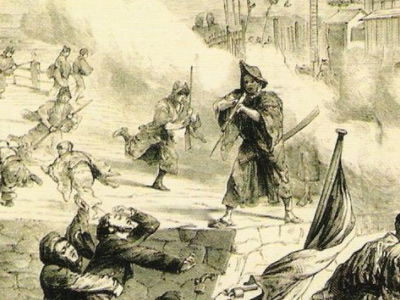Boshin War 戊辰戦争 (1868-1869)
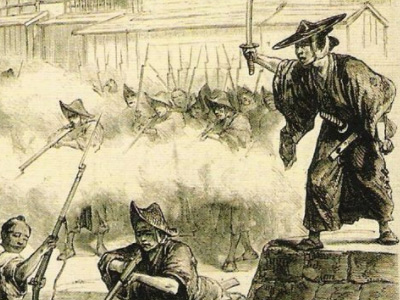
The Boshin War (戊辰戦争 Boshin Sensō, "War of the Year of the Yang Earth Dragon"), sometimes known as the Japanese Revolution, was a civil war in Japan, fought from 1868 to 1869 between forces of the ruling Tokugawa shogunate and those seeking to return political power to the Imperial Court.
The war found its origins in dissatisfaction among many nobles and young samurai with the shogunate's handling of foreigners following the opening of Japan Japan is an island country in East Asia. Beginning in the 12th century, political power was held by a series of military dictators (shōgun) and feudal lords (daimyō) and enforced by a class of warrior nobility (samurai). In the Meiji period, the empire adopted a Western-modeled constitution and pursued a program of industrialization and modernization. A global leader in the automotive, robotics and electronics industries, Japan has made significant contributions to science and technology. during the prior decade. Increasing Western influence in the economy led to a decline similar to other Asian countries at the time. An alliance of western samurai, particularly the domains of Chōshū, Satsuma and Tosa, and court officials, secured control of the imperial court and influenced the young Emperor Meiji. Tokugawa Yoshinobu, the sitting shogun, realizing the futility of his situation, abdicated political power to the emperor. Yoshinobu had hoped that by doing this, the Tokugawa house could be preserved and participate in the future government.
Japan is an island country in East Asia. Beginning in the 12th century, political power was held by a series of military dictators (shōgun) and feudal lords (daimyō) and enforced by a class of warrior nobility (samurai). In the Meiji period, the empire adopted a Western-modeled constitution and pursued a program of industrialization and modernization. A global leader in the automotive, robotics and electronics industries, Japan has made significant contributions to science and technology. during the prior decade. Increasing Western influence in the economy led to a decline similar to other Asian countries at the time. An alliance of western samurai, particularly the domains of Chōshū, Satsuma and Tosa, and court officials, secured control of the imperial court and influenced the young Emperor Meiji. Tokugawa Yoshinobu, the sitting shogun, realizing the futility of his situation, abdicated political power to the emperor. Yoshinobu had hoped that by doing this, the Tokugawa house could be preserved and participate in the future government.
However, military movements by imperial forces, partisan violence in Edo, and an imperial decree promoted by Satsuma and Chōshū abolishing the house of Tokugawa led Yoshinobu to launch a military campaign to seize the emperor's court in Kyoto. The military tide rapidly turned in favor of the smaller but relatively modernized imperial faction, and after a series of battles culminating in the surrender of Edo, Yoshinobu personally surrendered. Those loyal to the Tokugawa retreated to northern Honshū and later to Hokkaidō, where they founded the Ezo republic. Defeat at the Battle of Hakodate broke this last holdout and left the imperial rule supreme throughout the whole of Japan, completing the military phase of the Meiji Restoration.
Around 120,000 men were mobilised during the conflict, and of these about 3,500 were killed. In the end, the victorious imperial faction abandoned its objective to expel foreigners from Japan and instead adopted a policy of continued modernization with an eye to eventual renegotiation of the Unequal Treaties with the Western powers. Due to the persistence of Saigō Takamori, a prominent leader of the imperial faction, the Tokugawa loyalists were shown clemency, and many former shogunate leaders and samurai were later given positions of responsibility under the new government.
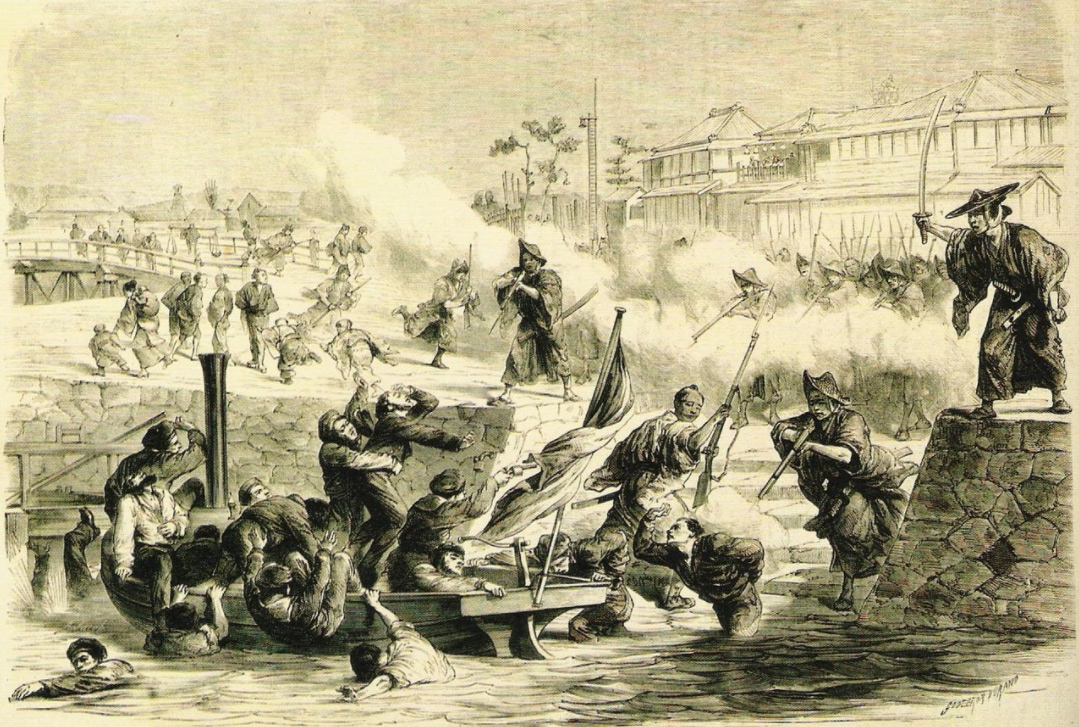
The killing of French sailors by Tosa soldiers in the Sakai incident, 8 March 1868. Le Monde Illustré

The killing of French sailors by Tosa soldiers in the Sakai incident, 8 March 1868. Le Monde Illustré
( Click image to enlarge)
When the Boshin War began, Japan was already modernizing, following the same course of advancement as that of the industrialized Western nations. But Japan protected its vulnerable economy by rejecting Western-enforced free trade. And since those Western nations, especially the United Kingdom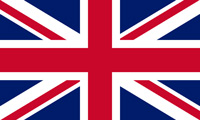 The United Kingdom of Great Britain and Ireland was a sovereign state in Northwestern Europe that comprised the entirety of the British Isles between 1801 and 1922. The United Kingdom, having financed the European coalition that defeated France during the Napoleonic Wars, developed a large Royal Navy that enabled the British Empire to become the foremost world power for the next century. and France
The United Kingdom of Great Britain and Ireland was a sovereign state in Northwestern Europe that comprised the entirety of the British Isles between 1801 and 1922. The United Kingdom, having financed the European coalition that defeated France during the Napoleonic Wars, developed a large Royal Navy that enabled the British Empire to become the foremost world power for the next century. and France Second French Empire was the 18-year Imperial Bonapartist regime of Napoleon III from 14 January 1852 to 27 October 1870. The Second Empire is given high credit for the rebuilding of Paris with broad boulevards, striking public buildings, and elegant residential districts for upscale Parisians. In international policy, Napoleon III tried to emulate his uncle Napoleon I, engaging in numerous imperial ventures around the world as well as several wars in Europe., were deeply involved in the country's politics, the installation of Imperial power added more turbulence to the conflict. Over time, the war has been romanticized as a "bloodless revolution", because of the small number of casualties.
Second French Empire was the 18-year Imperial Bonapartist regime of Napoleon III from 14 January 1852 to 27 October 1870. The Second Empire is given high credit for the rebuilding of Paris with broad boulevards, striking public buildings, and elegant residential districts for upscale Parisians. In international policy, Napoleon III tried to emulate his uncle Napoleon I, engaging in numerous imperial ventures around the world as well as several wars in Europe., were deeply involved in the country's politics, the installation of Imperial power added more turbulence to the conflict. Over time, the war has been romanticized as a "bloodless revolution", because of the small number of casualties.
HISTORY
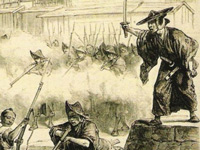
RESOURCES
This article uses material from the Wikipedia article "Boshin War (1868-1869)", which is released under the Creative Commons Attribution-Share-Alike License 3.0.
© Stories Preschool. All Rights Reserved.
